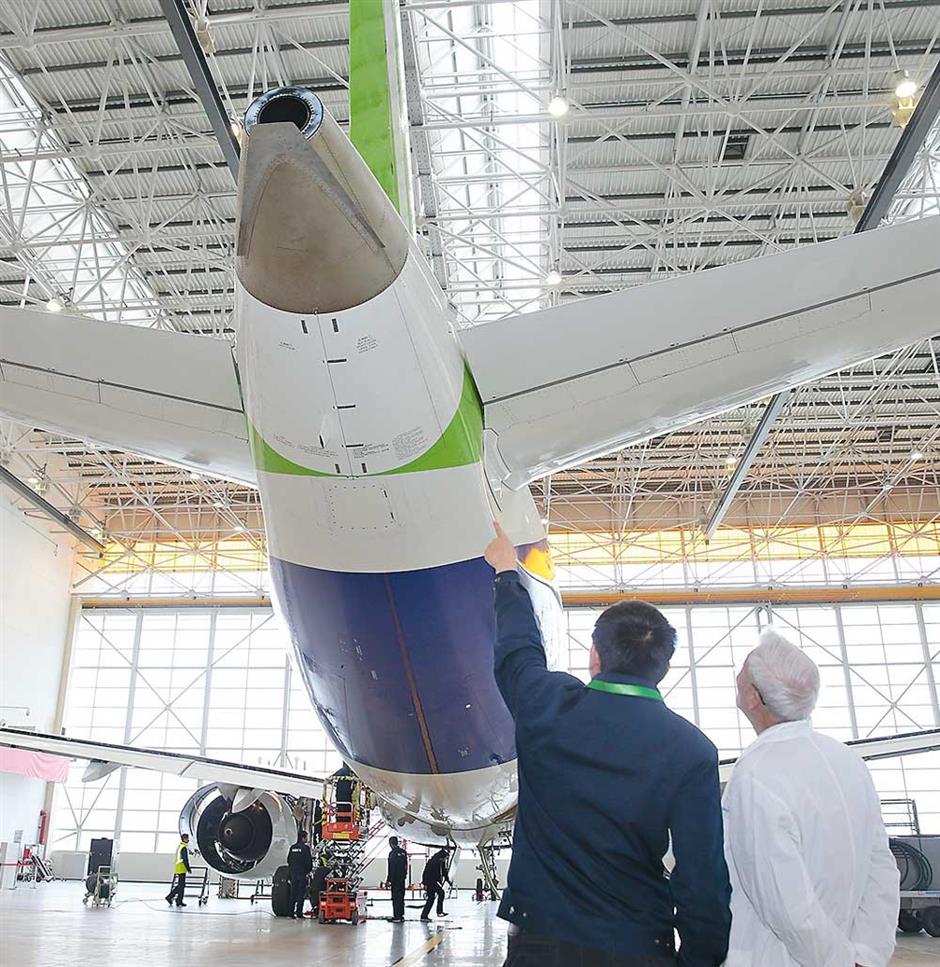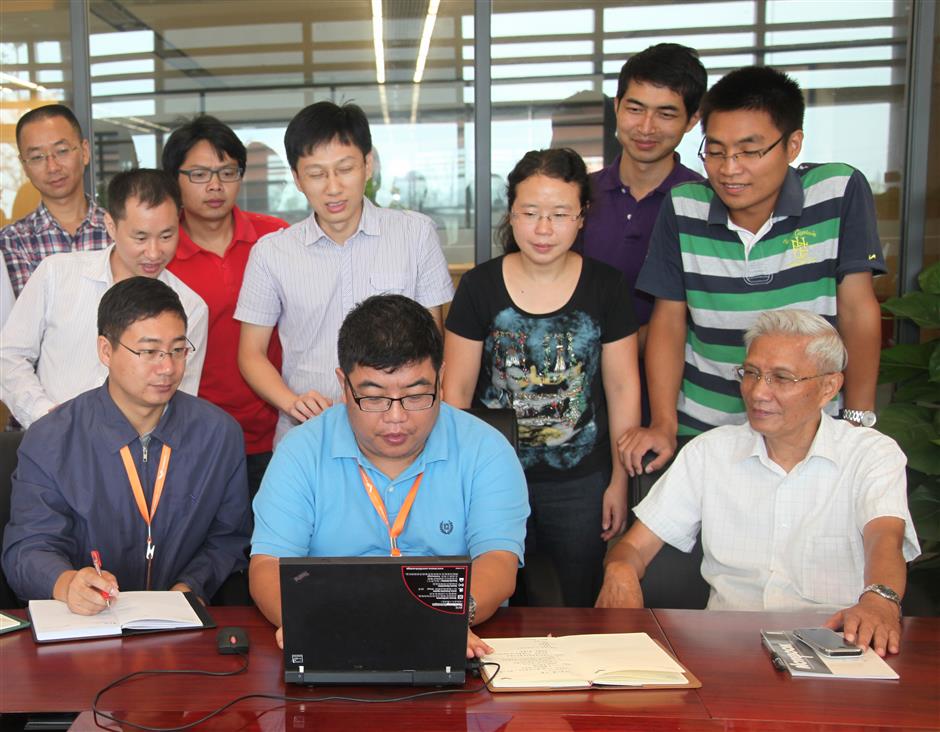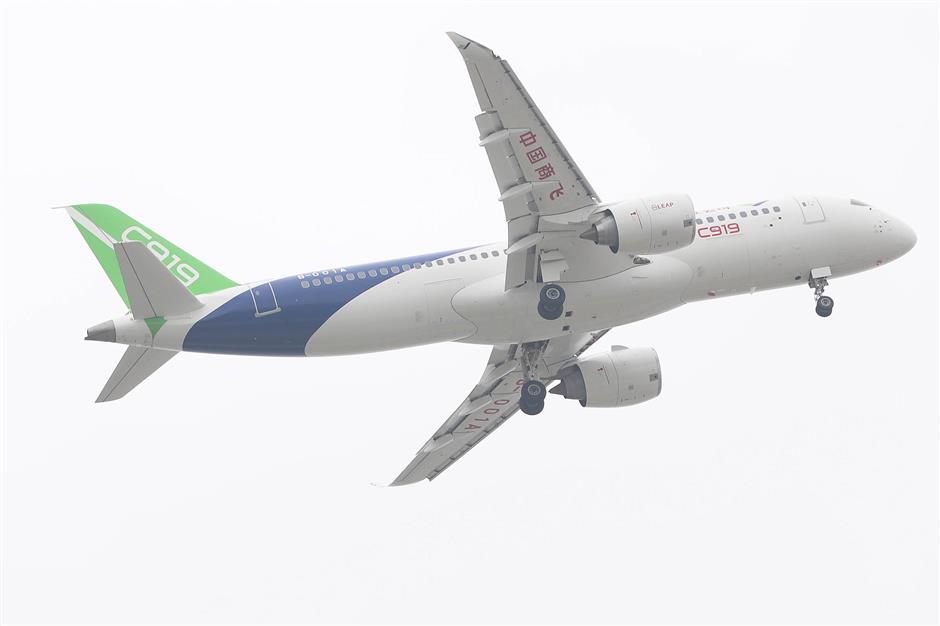Hendrik_2000
Lieutenant General
Excellent news after so much delay, twist and turn, They finally crank up the production. Hope they don't take short cut and make sure the quality is top notch. Is this new production facility or still the old one ?





Both 737max and A320 facilities in China is similar to Chinese introduction of CDMA and CDMA2000 in the early 1990s, a partial bargaining or balancing act related to C919's certification by FAA and EASA. One would easily see through it if one is familiar with the Chinese mobile standard struggle and market access stuff.didn't know Boeing Zhoushan Completion Facility Sets China Plan In Motion
Sep 26, 2017
Well, watching China for many years, just don't underestimate the demand from China for pretty much everything. Their demand is backed by consistent strong economic growth and people's living standard improvement, that is the scary part.
business jets are a different type of aircraft, the main manufacturers are located in North America, Europe and Brazil, and the main markets are in the Americas, only Europe can boast a relatively large demand outside the Americas
Oct 9, 2017 Danny Lam | Aviation Week & Space Technology
The trade dispute sparked by ’s charges that is dumping C Series aircraft at unfair prices is marked by loud rhetoric on both sides of the U.S.-Canada border. Ottawa’s Liberal government has threatened Boeing’s defense business in Canada and enlisted UK Prime Minister Theresa May to lobby U.S. President Donald Trump. But Canada’s attempts to derail the petitions filed by Boeing with the U.S. Commerce Department and International Trade Commission have had no effect so far. The reason: The true target is not really Canada, but China and its aircraft industry.
U.S. Trade Representative Robert Lighthizer charges that Beijing’s efforts to subsidize and create national champions and force technology transfers distorts markets throughout the world and is an “unprecedented” threat to the global trading system. Take aviation. By 2036, China is projected to be the No. 1 or No. 2 market in commercial aviation, a sector long dominated by and Boeing. Its national champion is Comac, which manufactures the regional jet and narrow-body and is developing—with Russia—the CR929 widebody. Beijing’s “Made in China 2025” plan sets aggressive targets for its aircraft industry, tasking Comac with taking more than 10% of the domestic market for mainline commercial aircraft.
That goal is backed by mercantilist policies and substantial government subsidies. Beijing has tried to break into markets before. China has poured tens of billions of dollars into cracking the semiconductor oligopoly controlled by U.S., Japanese, South Korean and Taiwanese companies. But so far it has not been successful in securing state-of-the-art integrated-circuit manufacturing technology because the industry has worked collaboratively to frustrate Chinese mercantilist ambitions. This has prevented the semiconductor market from suffering the fate of solar photovoltaics, or steel, where the market has been gutted by excess capacity from hundreds of new Chinese businesses.
Bombardier’s China strategy amounts to aiding and abetting Chinese mercantilism in commercial aviation, with predictable consequences for the global aerospace industry. The company entered into an agreement with Comac in 2012 to explore synergies between the C Series and C919, with the goal of challenging the Airbus-Boeing duopoly. Nothing concrete came out of that, and Bombardier nearly went bankrupt in 2015 before receiving investments from Canadian provincial and federal entities of at least $3 billion.
In May 2017, the Financial Times reported that Comac and Bombardier held talks about Chinese entities buying a stake in Bombardier Commercial Aircraft or the C Series, quoting an unnamed source as saying, “everything is on the table.” That included Chinese access to Bombardier’s technologies and its marketing, distribution and support infrastructure. This potential collaboration with China is, in my opinion, the principal but unspoken reason behind Boeing’s trade complaint.
As a Canadian company, Bombardier is entitled to preferences under the North American Free Trade Act (NAFTA) that sharply restrict U.S. trade actions so long as the product qualifies as NAFTA-origin. Indeed, Canada’s entitlement to arbitration under NAFTA’s Section 19 may be its last resort in the C Series dispute short of taking its case to the World Trade Organization. Not surprisingly, the U.S. wants to eliminate Chapter 19 in the renegotiation of NAFTA now underway.
So long as components add up to 50% of transaction value or 60% of net cost, a product qualifies for NAFTA preference. What if Chinese aerospace companies gained access to those same NAFTA preferences?
In its defense against Boeing’s claims, Bombardier says more than 50% of Canadian-assembled C Series aircraft come from the U.S., including its engines and avionics. The wing comes from Bombardier’s plant in Northern Ireland, but much of the fuselage already comes from SACC in China. It is conceivable that Bombardier could incorporate NAFTA-qualified engines, avionics and subsystems, but complete the final assembly in China—and have an aircraft that still qualifies as NAFTA-origin under the current rules.
Similarly, Chinese-built aircraft branded “Bombardier” could be sold from Canada while bypassing all tariffs against a China-based manufacturer. And Bombardier technology could enable Comac to build a successor to the C919 that would be truly competitive with Airbus and Boeing offerings in China. In other words, with Chinese investment, Comac-Bombardier could rapidly stand up as a capable competitor to the Airbus-Boeing duopoly in the North American and Chinese markets.
Boeing’s complaints about C Series subsidies are getting the media attention, but Bombardier’s willingness to transfer technologies and knowhow to China is at the heart of this trade dispute.
Danny Lam is a research associate at the University of Waterloo in Ontario. His research includes work on China, NAFTA and defense issues. The views expressed are not necessarily those of Aviation Week.
Commercial aviation and semiconductor industries are the two priorities for China. The US is going all out to prevent the Chinese from gaining technology know-how in the areas...
Every where in the world there is growth, but when you have an economy of USD $55000 per capital GDP like in the USA even growing at 2% means a yearly growth USD $1100 a year, basically the US at 2% grows per capita as China does in per capita every year however the US per capita is more than 3 times the Chinese per capita GDP.Well, watching China for many years, just don't underestimate the demand from China for pretty much everything. Their demand is backed by consistent strong economic growth and people's living standard improvement, that is the scary part.
So i do not think at this moment China has the demand the USA has.Choosing Your Private Aircraft
Private jet hourly rental rates begin at just $1700 USD for a four-passenger turbo prop and go all the way up to $23,000 USD per hour for a VIP airliner with multiple showers and bedrooms. To find the right aircraft for you, read on for an overview of hourly price ranges, passenger capacity, flight range and air speed for each aircraft category.
The per capita income doesn't mean much in this case. Not everyone makes the same amount of money in a country. And China has a fast growing billionaire and millionaire class. I'm not saying its a good or a bad thing but its the fact. So there is a growing demand for business jets in China.Every where in the world there is growth, but when you have an economy of USD $55000 per capital GDP like in the USA even growing at 2% means a yearly growth USD $1100 a year, basically the US at 2% grows per capita as China does in per capita every year however the US per capita is more than 3 times the Chinese per capita GDP.
To operate a private jet is quiet expensive, much more expensive than airliner regular cheaper tickets.
China today at per capita level is much more poor than the USA, while i can say flying an A-320 is cheaper i can see the Chinese have a Market but for private jets, i do not think so, operate a Phenom or Learjet is much more expensive, so i do not see such market yet
So i do not think at this moment China has the demand the USA has.
Mass flying well is possible China might compete even wrestle for the largest airliner martket, but operating private jets is quiet expensive
Every where in the world there is growth, but when you have an economy of USD $55000 per capital GDP like in the USA even growing at 2% means a yearly growth USD $1100 a year, basically the US at 2% grows per capita as China does in per capita every year however the US per capita is more than 3 times the Chinese per capita GDP.
To operate a private jet is quiet expensive, much more expensive than airliner regular cheaper tickets.
China today at per capita level is much more poor than the USA, while i can say flying an A-320 is cheaper i can see the Chinese have a Market but for private jets, i do not think so, operate a Phenom or Learjet is much more expensive, so i do not see such market yet
So i do not think at this moment China has the demand the USA has.
Mass flying well is possible China might compete even wrestle for the largest airliner martket, but operating private jets is quiet expensive



